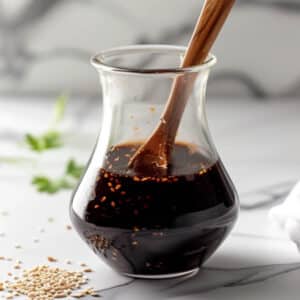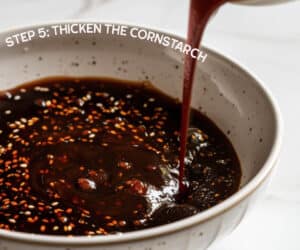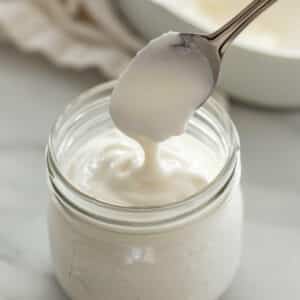This easy homemade teriyaki sauce isn't just a condiment. Say goodbye to store bought sauces and embrace a burst of flavors that'll bring a new zing to your daily meals. Imagine this – a drizzle of this teriyaki wonder over your go-to beef, chicken, veggies, noodles, or even rice. And the best part? It's a breeze to make, just about 15 minutes from start to finish.
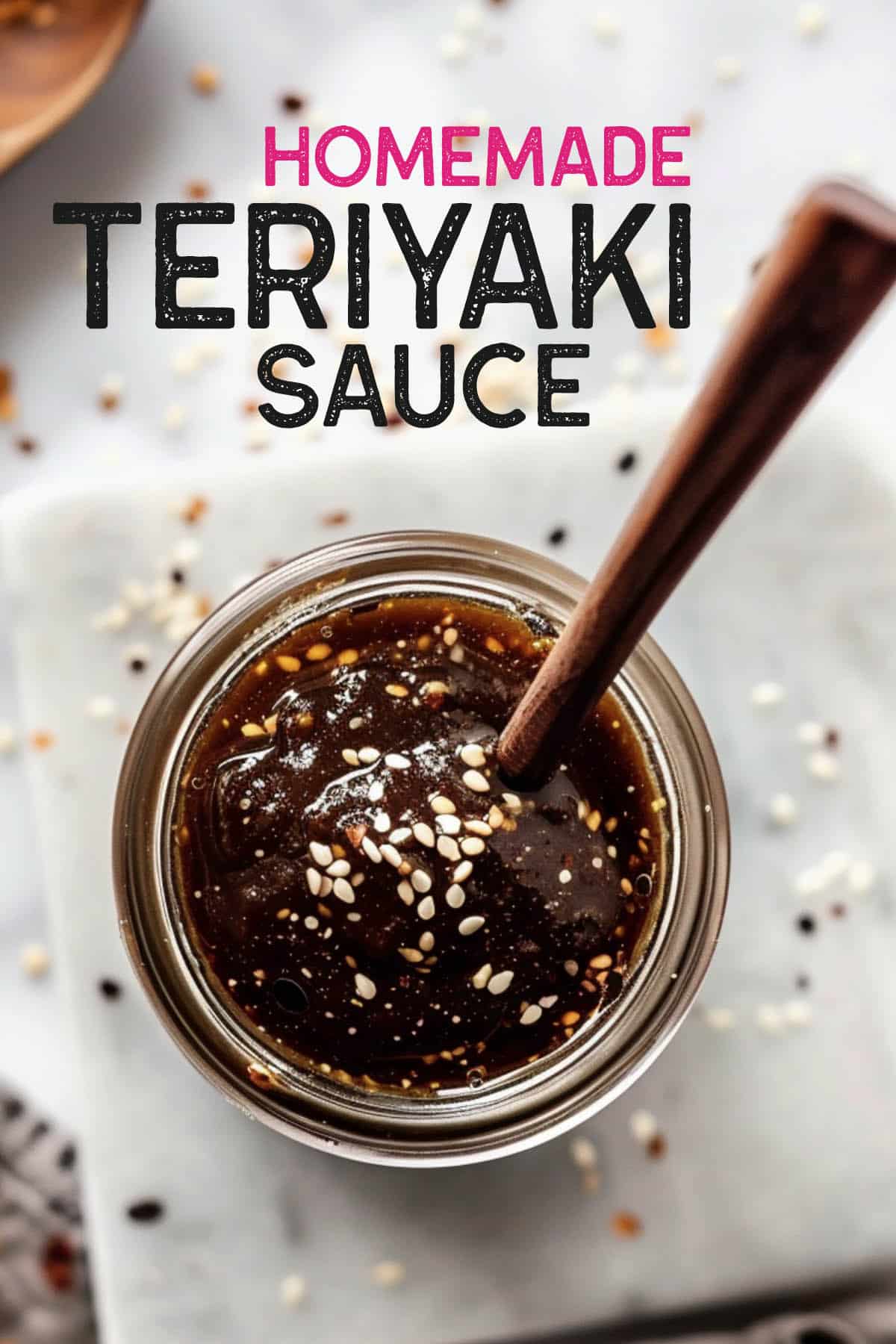
Take aways:
- Balance the Flavors: The secret to great Teriyaki sauce is mixing the right amounts of sweet, savory, and umami.
- Use Quality Ingredients: The flavor of your Teriyaki sauce depends a lot on the ingredients' quality.
- Make it Your Own: Feel free to swap ingredients like using honey instead of sugar or tamari for a gluten-free version.
- Use it in Many Ways: Teriyaki sauce is great for marinating meat, glazing vegetables, or as a stir-fry sauce, making it a versatile addition to any dish.
Jump to:
What Exactly is Teriyaki?
Teriyaki, a classic of Japanese cooking, is not just a sauce but a cooking technique. The "teri" in teriyaki means shiny, perfectly describing the look of food glazed in this sauce. While "yaki" means grilling or broiling. The sauce used in this cooking style is a harmonious blend of soy sauce, sake or Mirin, and sugar, creating a perfect balance of umami, sweetness, and depth.
Teriyaki Sauce Recipe
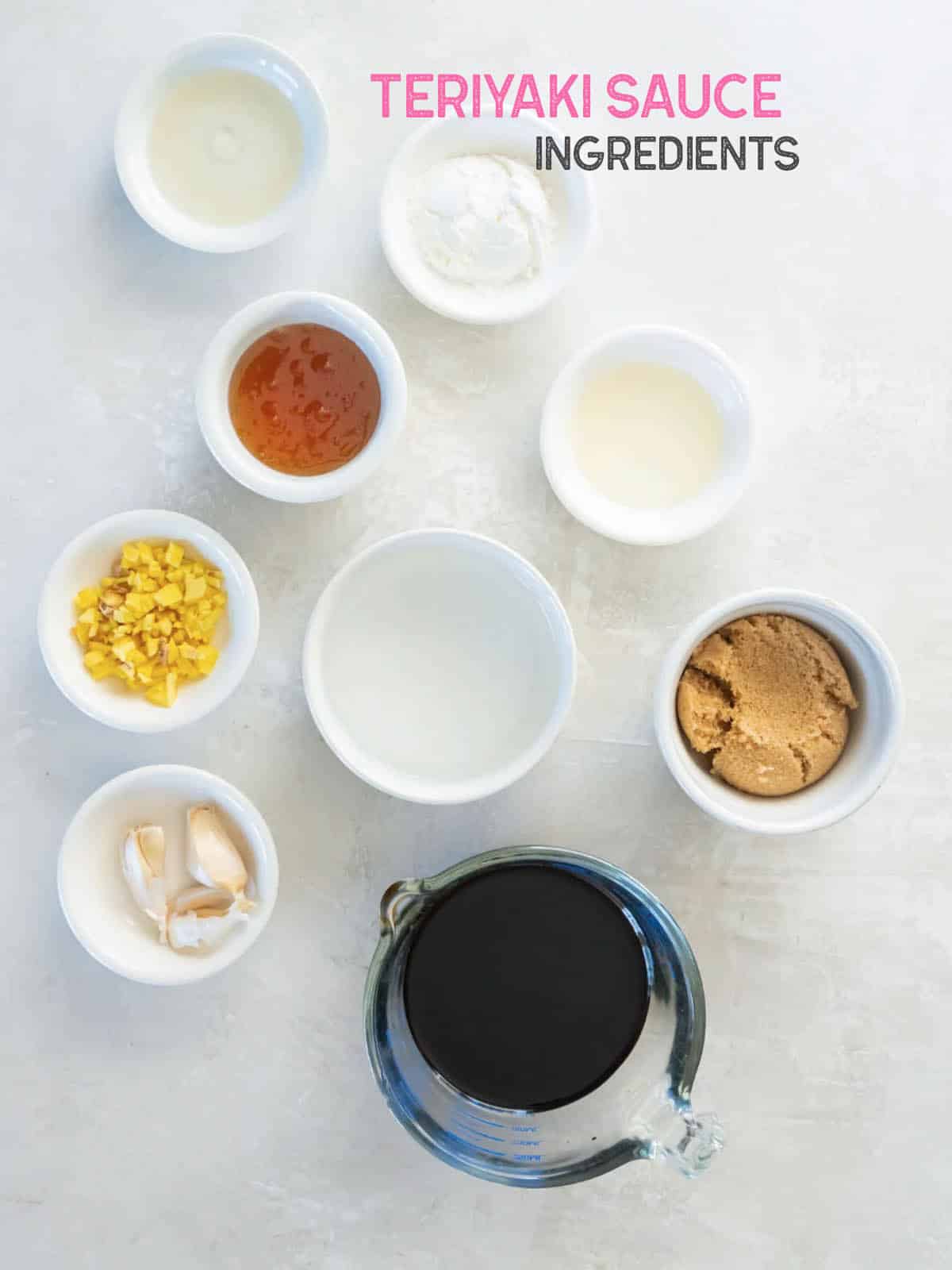
Ingredients You'll Need:
- Soy Sauce: The base of the sauce provides umami and saltiness.
- Sake or Mirin: Adds sweetness and complexity; mirin also lends a mild acidity.
- Sugar: Balances the saltiness and adds a subtle sweetness.
- Grated Ginger: Adds a fresh, zesty note to the sauce.
- Brown Sugar: For a deeper, richer sweetness.
- Minced Fresh Garlic: Infuses a subtle garlicky flavor.
- Red Pepper Flakes: For a hint of heat, enhance the sauce's complexity.
Step by step Instructions:
Combine Liquids. In a small saucepan, mix the soy sauce, sugar, water, and mirin.
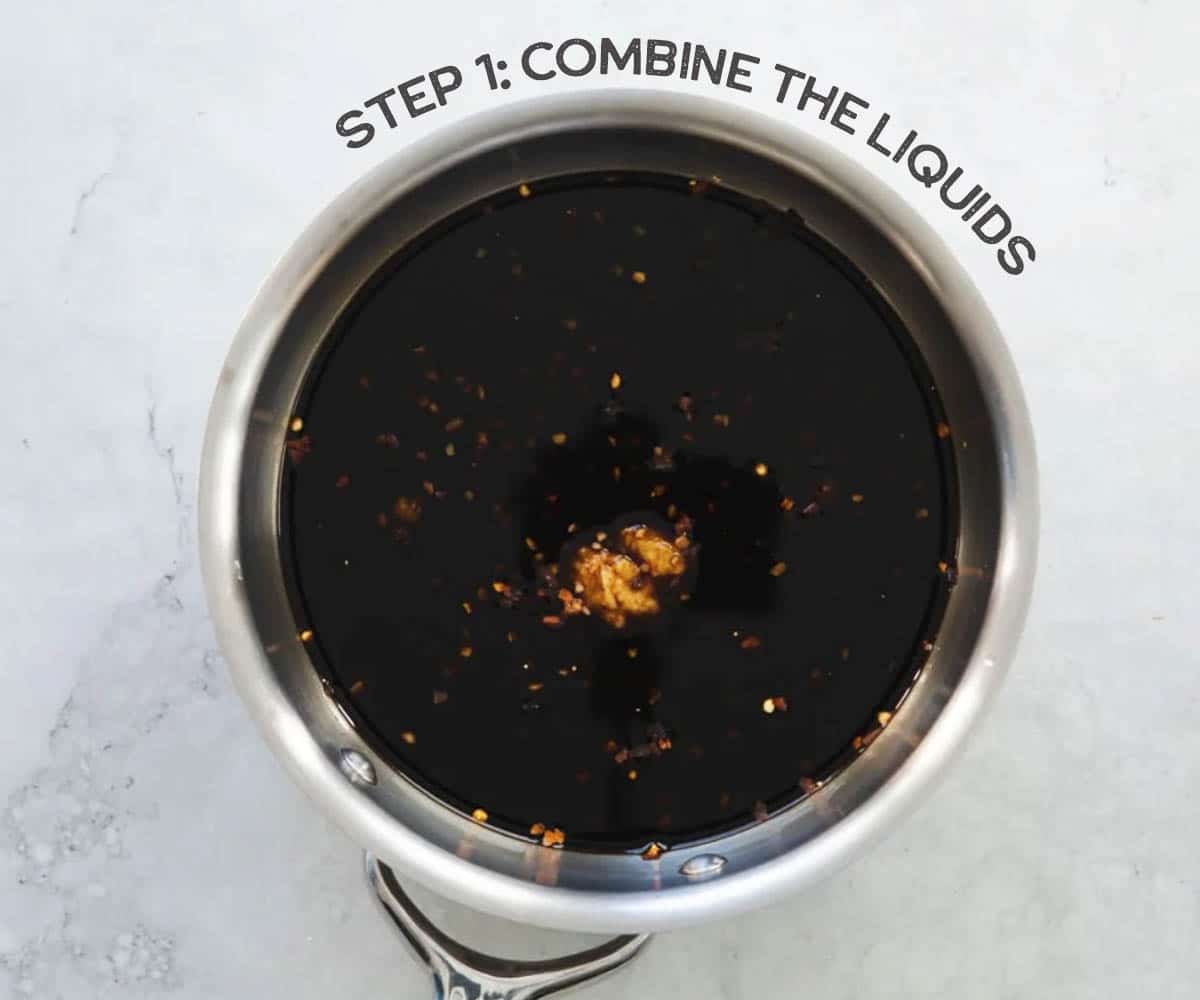
Add Aromatics. Stir in the grated ginger, minced garlic, and crushed red pepper flakes (if using).
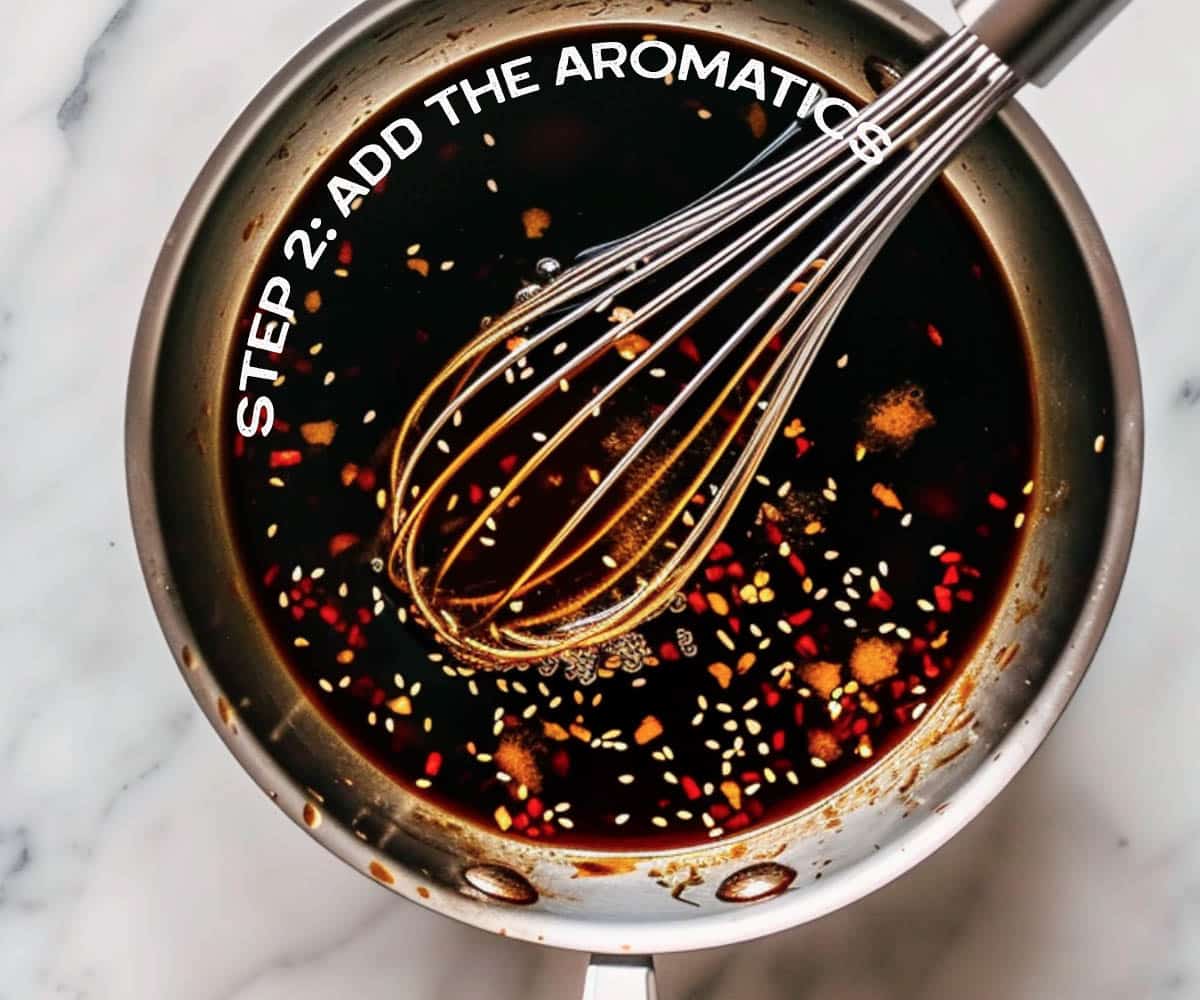
Prepare Cornstarch Slurry. Mix the cornstarch with a tablespoon of water to create a slurry in a separate small bowl (if using).
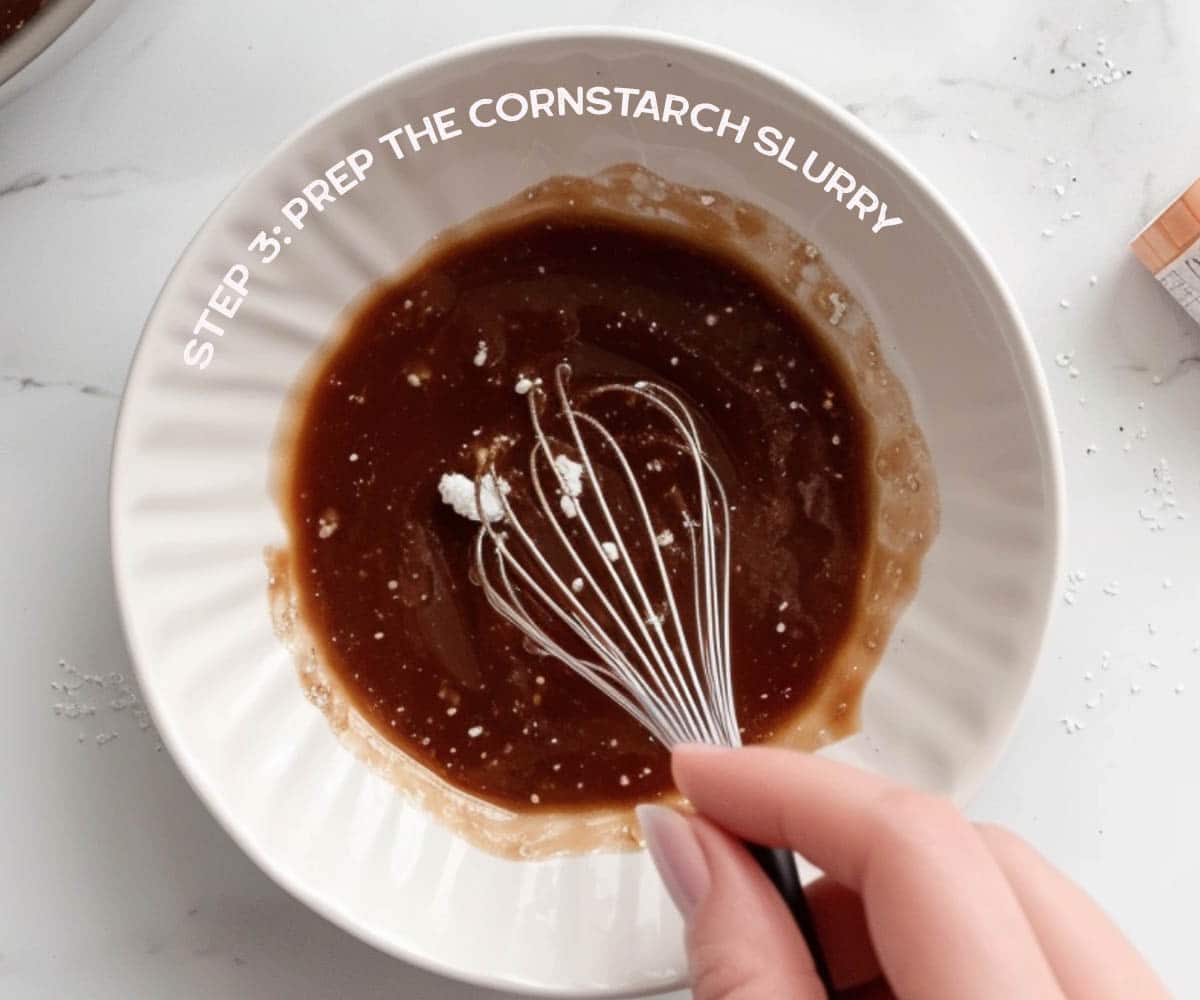
Cook the Sauce. Heat the sauce mixture on medium heat until the sugar dissolves, stirring occasionally.

Thicken with Cornstarch. Add the cornstarch slurry to the saucepan, stirring constantly. Simmer for a couple of minutes until the sauce thickens.
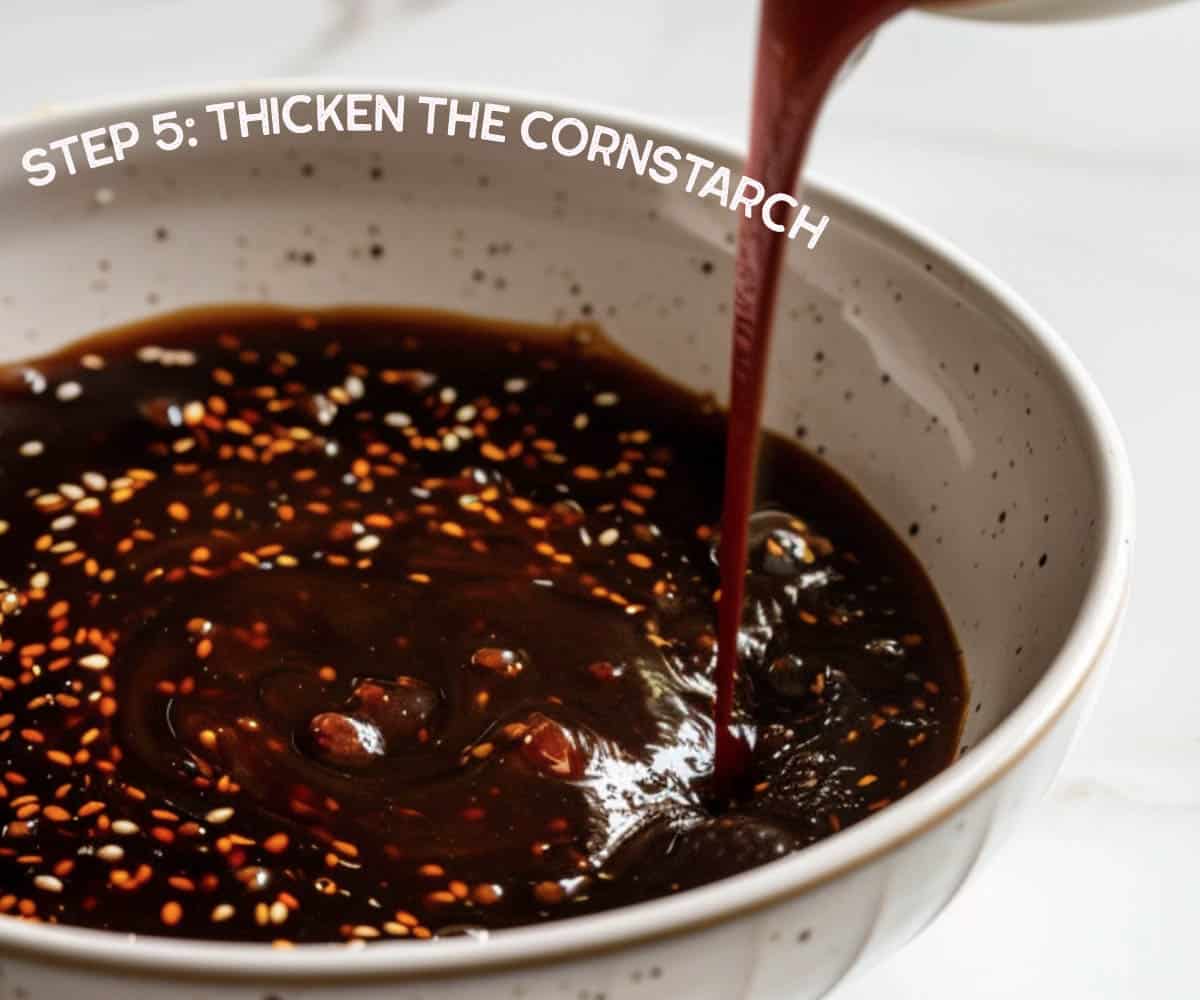
Cool and Store. Remove from heat and let it cool. The sauce will thicken further as it cools. Store it in an airtight container in the refrigerator.

Pro Tips:
- Consistent Stirring: Ensure to stir regularly, especially after adding the cornstarch, to avoid lumps.
- Adjust the Spice: If you're sensitive to spice, omit the red pepper flakes.
- Check Consistency: When ready, the sauce should coat the back of a spoon.
Easy Ingredient Swaps for Homemade Teriyaki Sauce
Substituting ingredients in Teriyaki sauce can be essential when you're missing an ingredient or catering to specific dietary preferences.
Here are some of the best substitutes for each key ingredient in Teriyaki sauce:
1 Soy Sauce Substitutes
- Tamari: Gluten-free and slightly thicker, tamari is a great alternative for those avoiding gluten.
- Coconut Aminos: A soy-free and lower sodium option, coconut aminos have a sweeter, milder flavor.
- Worcestershire Sauce: Although it has a different flavor profile, it can be a decent substitute in a pinch, especially for non-vegetarian recipes.
2 Sake or Mirin Substitutes
- Dry Sherry: A good substitute for sake, offering a similar flavor profile.
- Sweet Marsala Wine: It can replace mirin, though it's a bit stronger in flavor.
- Rice Vinegar (with added sugar): If you're out of mirin, mix rice vinegar with sugar for a similar sweet and tangy taste.
3 Sugar Substitutes
- Honey: Offers a natural sweetness and can add a rich flavor.
- Maple Syrup: A good vegan option that has distinct, rich sweetness.
- Brown Sugar: Adds a deeper, caramel-like sweetness than regular sugar.
4 Ginger Substitutes
- Ground Ginger: While fresh is best, ground ginger can work in a pinch. Use ¼ teaspoon of ground ginger for every tablespoon of fresh ginger.
- Galangal: Similar to ginger, but with a sharper, spicier taste.
5 Garlic Substitutes
- Garlic Powder: Use ⅛ teaspoon of garlic powder for every fresh garlic clove.
- Asafoetida (Hing): A pungent spice often used in Indian cooking, it's a good garlic substitute in small amounts.
6 Red Pepper Flakes Substitutes
- Cayenne Pepper: Use a pinch of cayenne pepper for a similar heat.
- Hot Sauce: Add a few drops to mimic the heat, but be cautious as it can alter the liquid ratio.
Remember, when substituting ingredients, the sauce's flavor profile may change slightly. It's always a good idea to taste and adjust the seasoning to achieve the desired balance.
How to Thicken Teriyaki Sauce
Regarding the consistency of Teriyaki sauce, there's a notable difference between the traditional Japanese approach and the Americanized version.
Japanese Teriyaki sauce is typically reduced in the pan, allowing it to thicken naturally to a richer consistency without additional thickeners. This method emphasizes the sauce's natural flavors and texture.
However, in American-style cooking, Teriyaki sauce is often thicker and more syrupy. If you prefer this style, you can achieve a similar consistency by making cornstarch slurry: add 2 tablespoon of water and one tablespoon of cornstarch or potato starch. This method can be used to adjust the sauce to your desired thickness.
Troubleshooting: Simple Fixes for Common Issues
Troubleshooting Teriyaki sauce can be approached from several angles depending on your issue. Here are some common problems and solutions:
1 The sauce is Too Thin
- Cause: Insufficient reduction or not enough thickening agents.
- Solution: Simmer the sauce longer to reduce it further and thicken naturally. Alternatively, you can mix a small amount of cornstarch with water to create a slurry and add it to the sauce, stirring constantly until the desired consistency is reached.
2 For a Too Thick Sauce
- Cause: Over-reduction or too much thickening agent.
- Solution: To thin it out, add a small amount of water, sake, or soy sauce. Do this gradually, stirring well, to achieve the desired consistency.
3 If the Sauce is Too Sweet
- Cause: Excess sugar or Mirin (sweet rice wine).
- Solution: Balance it out by adding a bit more soy sauce or a small amount of vinegar to introduce some acidity. This can help counteract the sweetness.
4 In Case the Sauce is Not Sweet Enough
- Cause: Insufficient sugar or mirin.
- Solution: Add a bit more sugar or mirin, but do it gradually while tasting, to avoid making it too sweet.
5 When the Sauce Lacks Depth of Flavor
- Cause: Insufficient simmering time or imbalance of ingredients.
- Solution: Simmer the sauce longer to allow the flavors to meld. You can also add a small amount of ginger or garlic for additional depth.
6 Dealing with a Sauce That's Too Salty
- Cause: Excessive soy sauce or misjudged salt content.
- Solution: Balance the saltiness by adding more sugar, mirin, and possibly some water. In extreme cases, you might have to prepare a new, less salty batch and mix it with the overly salty one.
7 Lack of Umami
- Cause: Insufficient soy sauce or absence of other umami-rich ingredients.
- Solution: Add a bit more soy sauce, or consider incorporating ingredients like a dash of fish sauce, a small amount of MSG, or a bit of dashi stock.
Tips for Perfect Teriyaki Sauce:
- Balance is Key: The essence of a good Teriyaki sauce lies in the balance of sweetness, saltiness, and umami.
- Quality Ingredients: Use high-quality soy sauce, Mirin, and sake for the best results.
- Taste as You Go: Continuously taste your sauce while adjusting to ensure the flavors are well-balanced.
10 Creative Uses for Teriyaki Sauce in Cooking
Teriyaki sauce is an excellent choice as a marinade for meats and vegetables. Marinating with teriyaki sauce enhances the flavors, giving your dishes a delicious twist.
You can experiment with various marinating techniques, such as overnight marination or quick 30-minute sessions, to see what works best.
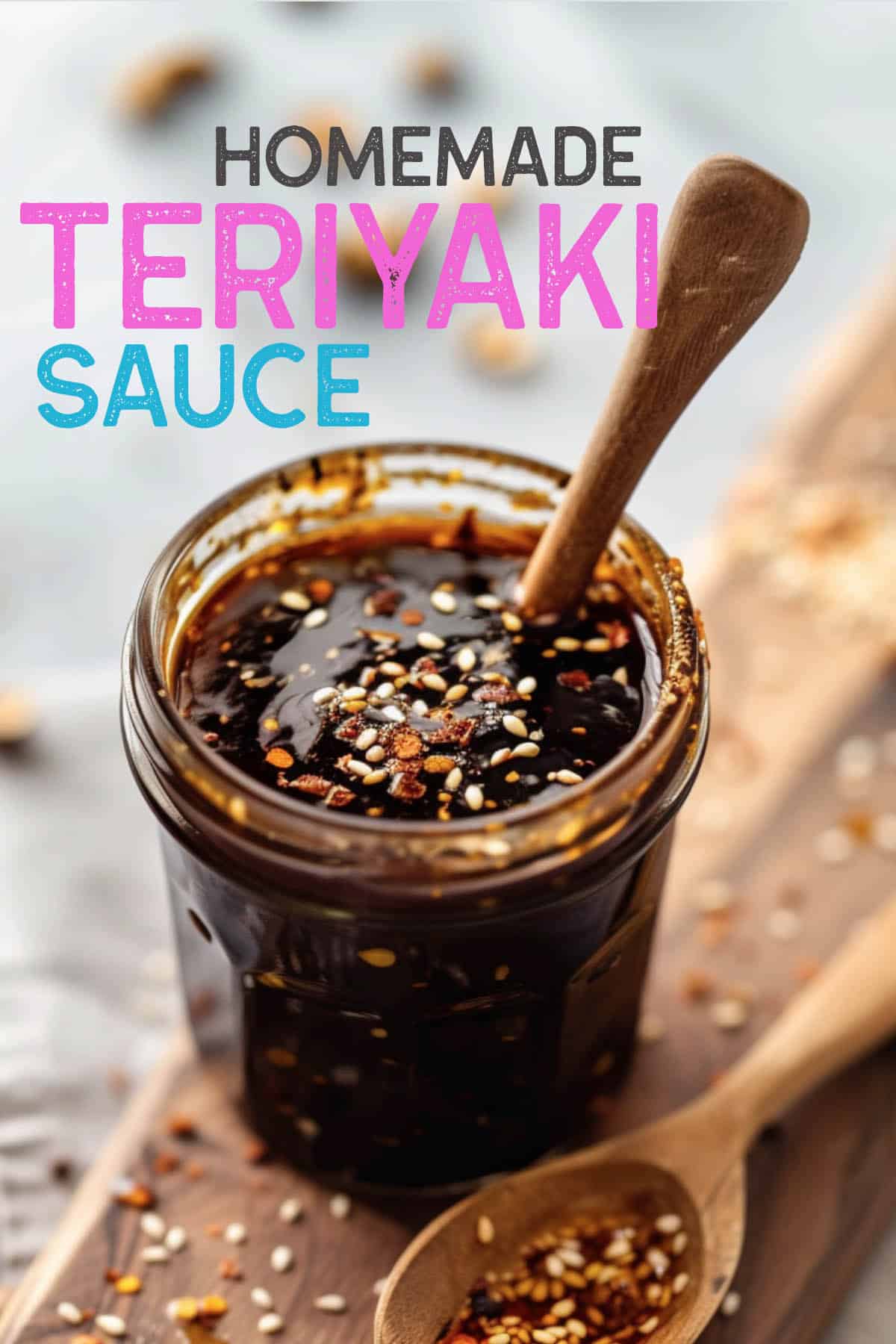
1 Marinade for Meats and Fish
- Teriyaki sauce is excellent for marinating chicken, beef, pork, and fish, especially salmon. The marinade imparts a delicious umami flavor and helps to tenderize the meat.
2 Glaze for Grilled or Broiled Dishes
- It can be brushed onto meats, fish, and vegetables during grilling or broiling, creating a glossy, caramelized, visually appealing, and flavorful finish.
3 Stir-Fry Sauce
- Teriyaki sauce is a popular choice for stir-fry dishes, adding depth and richness to vegetables, tofu, and meats cooked quickly over high heat.
4 Dipping Sauce
- Served as a dipping sauce, it complements a variety of dishes, including dumplings, sushi rolls, and tempura.
5 Ingredient in Salad Dressings
- Mixed the sauce with ingredients like vinegar, sesame oil, and ginger, teriyaki sauce can be transformed into a unique salad dressing, giving salads an Asian-inspired twist.
6 Rice or Noodle Flavor Enhancer
- A dash of teriyaki sauce can add a savory-sweet element to plain rice or noodles, enhancing their flavor significantly.
7 Basting Sauce for Roasts
- It's often used as a basting sauce for oven-roasts, particularly for poultry and pork, adding a distinct flavor and a shiny glaze.
8 Sauce for Burgers and Sandwiches
- Teriyaki sauce can be a flavorful condiment in burgers and sandwiches, especially in fusion cuisine.
9 Topping for Pizza
- In innovative cooking, teriyaki sauce is used topping on pizzas, often paired with ingredients like chicken, scallions, and cheese.
10 Base for Other Sauces
- It can be combined with other sauces or ingredients (like mayonnaise or hot sauce) to create unique sauces for various dishes.
Storing Teriyaki Sauce
Refrigeration Tips
Properly store teriyaki sauce in the refrigerator to maintain its freshness. Ensure the sauce is tightly sealed to prevent air exposure, which can lead to flavor changes. Store-bought teriyaki sauce usually comes with specific refrigeration instructions on the label.
To extend the shelf life of homemade teriyaki sauce, transfer it to an airtight container before refrigerating. This helps preserve its flavors and prevents contamination. Always check for any signs of spoilage before using stored teriyaki sauce.
Freezing Instructions
Freezing teriyaki sauce is convenient to ensure you always have some on hand. Pour leftover sauce into freezer-safe containers or ice cube trays for easy portioning when needed. Frozen teriyaki sauce can last up to three months without compromising taste and quality.
When freezing teriyaki sauce, consider labeling containers with dates for better organization and tracking of freshness. Thaw frozen sauce in the refrigerator overnight or gently heat it on low heat if immediate use is required.
Delicious Recipes with Teriyaki
Non-Japanese Recipes
Teriyaki sauce is incredibly versatile and can be used in various non-Japanese recipes to add a unique flavor profile. For instance, teriyaki chicken tacos combine teriyaki sauce's sweetness with Mexican cuisine's savory elements. You can also make teriyaki-glazed burgers by adding a twist to traditional American dishes.
Exploring fusion dishes like:
- Teriyaki salmon
- teriyaki salmon poke bowls
- teriyaki beef stir-fry noodles
- Moo Shu Beef recipe
- Pepper Lunch Beef Pepper Rice
- Panda Express Chow Mein copycat
- Yard House Steak Bowl Recipe
Allows you to experience different culinary traditions blending harmoniously with the rich flavors of teriyaki sauce. These innovative recipes showcase how teriyaki sauce can elevate everyday meals into extraordinary dining experiences.
Full Recipe
Homemade Teriyaki Sauce
Pin RecipeEquipments:
- saucepan
Ingredients:
- ¼ cup water
- ½ cup soy sauce
- 3 tbsp Mirin (or Sake or rice vinegar)
- ½ cup brown sugar
- 2 tablespoon ginger (freshly grated)
- 1 tablespoon garlic (minced)
- ½ tablespoon red pepper flakes (optional)
Instructions:
- Begin by combining soy sauce, sugar, water, mirin, ginger, garlic, and optional red pepper flakes in a small saucepan. Bring this blend to a boil, then simmer over medium heat.
- Next, create a cornstarch slurry by whisking cornstarch into 2 tablespoons of the simmering teriyaki sauce in a separate small bowl.
- Reintroduce this slurry to the saucepan; continue to simmer until the sauce achieves a slightly thicker consistency, usually in 5 to 8 minutes, resulting in approximately 1 cup of sauce.
- Finally, remove the sauce from heat and let it cool to room temperature. It can be refrigerated up to a week in a mason jar. Ensure it's brought to room temperature before using.
Notes:
- Red pepper flakes: Feel free to leave these out if you're cooking for kids. On the other hand, if you're a fan of spicy flavors, go ahead and add a bit more.
- Mirin: You can easily find this Japanese cooking wine in many grocery stores. If it's not on the shelves, no worries! Just mix 3 tablespoons of dry white wine or rice vinegar with 1½ teaspoon of sugar as a substitute for the 3 tablespoons of mirin needed in this recipe.
- Yield: This recipe produces roughly 1 cup of teriyaki sauce.
Nutrition Information:
Please note that all nutrition information are just estimates. Values will vary among brands, so we encourage you to calculate these on your own for most accurate results.

